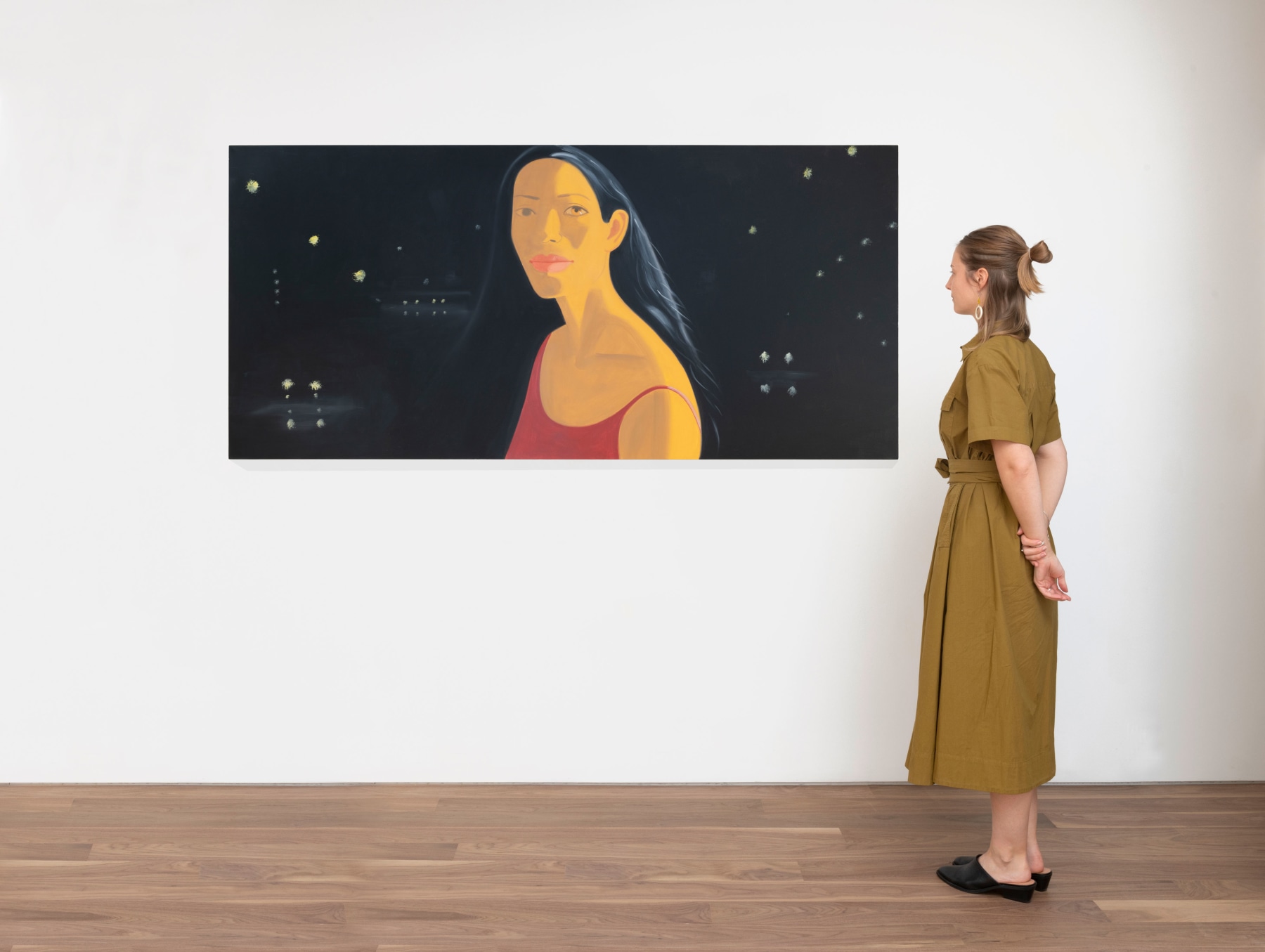A Closer Look: Alex Katz
Carmen, 1998
A Closer Look: Alex Katz

Carmen, 1998

Carmen, 1998
Alex Katz’s arresting Carmen, 1998 represents a bridge between Katz’s earlier, highly stylized portraits and his later, large-scale landscapes. The calming view of nocturnal New York contrasts beautifully with the warm glow of the subject.
The signature close crop of the portrait, tightly edging the composition around the upper body of the woman, is perfectly mirrored by the expansive landscape behind her. Rendered in the artist's distinctive flattened style, Carmen presents a critical moment in the artist’s illustrious career, connecting the iconic portraits that populate his early works with the landscapes that define the artist's later works. The painting stands as a superb example of Katz's particular brand of realism, championing the genre of the portrait and delving into the age-old tradition of landscape painting with the same mastery of bold brushstrokes.

Sandra 2, 1986, Oil on linen, the Fondation Louis Vuitton, Paris
Carmen forms part of an important series of composite landscape and portrait images created in the late eighties and early nineties that draw inspiration from film, advertising, and fashion. Katz describes the series’ inception, "It started in the movies. I was at Film Forum, and they were showing a Russian movie. People walking down an alley with trees around them. I thought it would be a great image for a winter painting. So I went down to city hall and painted it outdoors. It was a cold winter day and the air was kind of a little heavy, so the sun was trying to come through. I painted that en plein air. I liked the image a lot, so I asked Ada to come down and I did a sketch. I started with a relatively small landscape, and then I think I did the large one because it seemed like something that would go large successfully. I just thought I’d try the split. It just seemed like it would be an interesting idea” (Alex Katz cited in Julia Felsenthal, "Alex Katz on His Painting January 3," Vogue, June 2015, online).


Alex Katz, Bond Street 2, 1998 in The Albright-Knox Art Gallery, Buffalo
Monumental and invitingly impersonal, Katz’s realism reflects his training in commercial art. By increasing the scale of his works, reducing perspective, eliminating extraneous detail, and sharpening contours, he has created a unique and idiosyncratic method of painting.
Similar works to Carmen can be found in museums around the world, including Sandra 2, 1986 in the Fondation Louis Vuitton, Paris and Bond Street 2, 1998 in The Albright-Knox Art Gallery, Buffalo.
"People say painting is real and abstract. Everything in paint that’s representation is false because it’s not representational, it’s paint. We speak different languages and have different syntax. The way I paint, realistic is out of abstract painting as opposed to abstract style. So I use a line, a form and a color. So my contention is that my paintings are as realistic as Rembrandt’s...it was realistic painting in its time. It’s no longer a realistic painting. Realism’s a variable. For an artist, this is the highest thing an artist can do – to make something that’s real for his time, where he lives. But people don’t see it as realistic, they see it as abstract. But for me it’s realistic”
Alex Katz in conversation with David Sylvester, March 1997.